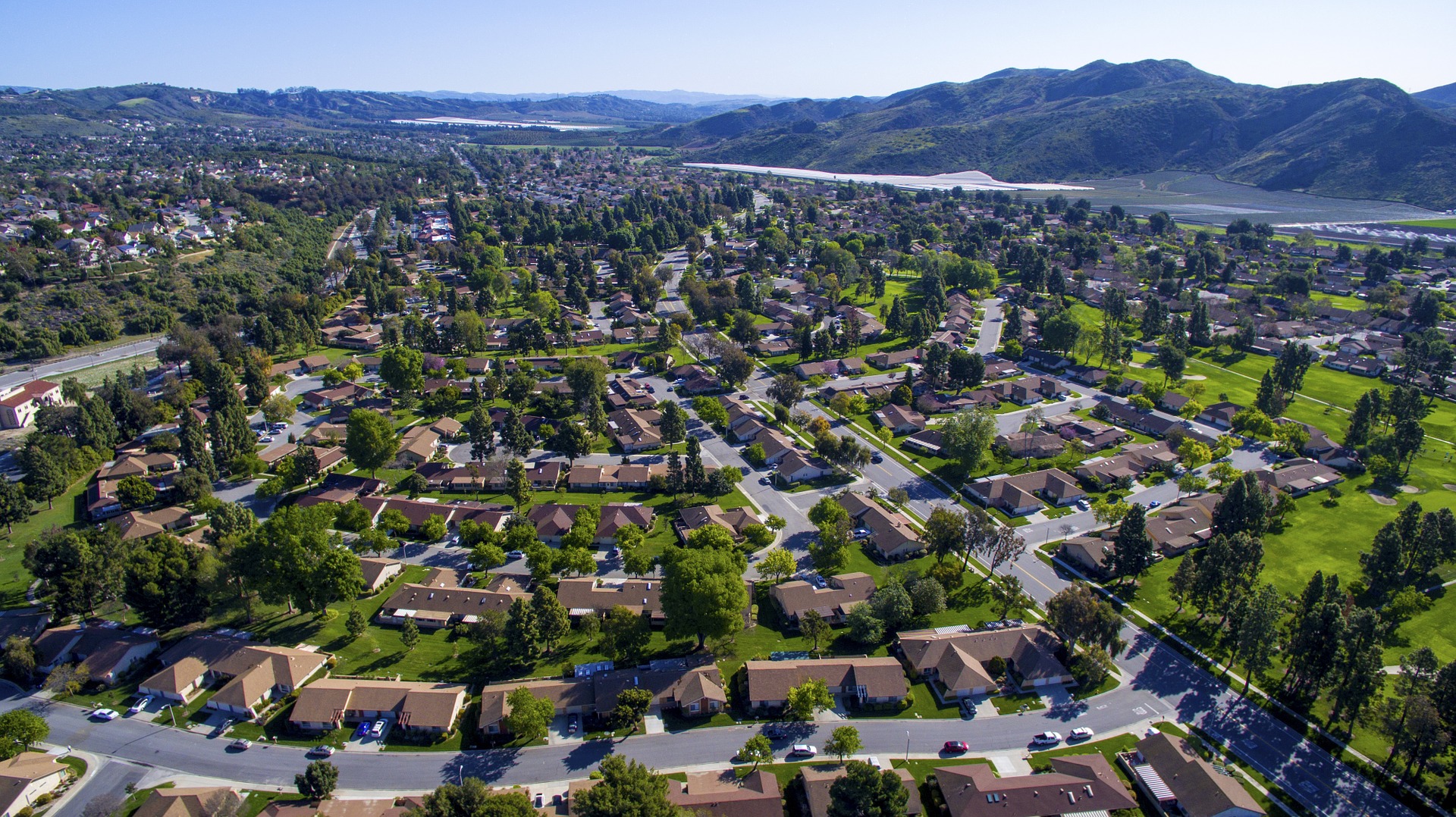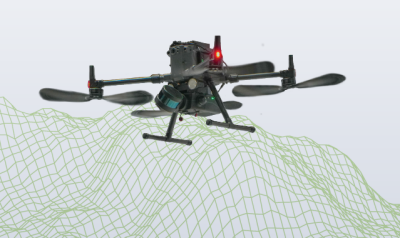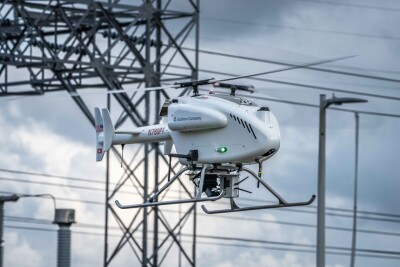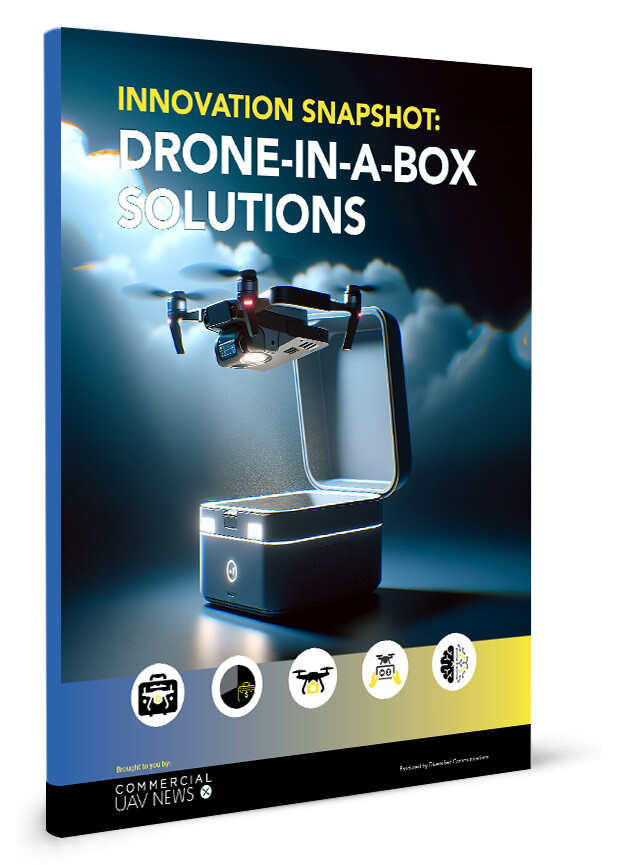Many people throughout the drone industry have expressed their excitement about all of the things that Part 107 allows operators to do. Once an operator receives their remote pilot certificate they are set to take to the sky in an especially powerful way, although there are still a number of inherent limitations. One of those is related to keeping a drone within line of sight, as being able to fly beyond visual line of sight (BVLOS) is something that needs to be approved of by the FAA via a separate waiver process.
Enabling drone operators and drones themselves to easily communicate with one another will have a major impact on be able to operate BVLOS, and that’s one of the reasons NASA is working to develop a UAS traffic management (UTM) system. This kind of technocratic drone solution will help define the aerial robotics era in an especially powerful manner, but NASA isn’t alone in their effort to create this system.Gryphon Sensors is a developer of sensor systems that detect, track and identify sUAS, and they’re also one of the companies working with NASA. I first caught wind of this effort to enable BVLOS operation at AUVSI’s XPONENTIAL conference, but I wanted to see how things have developed with for them in light of recent regulatory and technology changes. I was able to connect with Gryphon Sensors President Tony Albanese to discuss how they got involved with NASA, how Part 107 impacts anyone who wants to operate BVLOS and plenty more.Jeremiah Karpowicz: Tell us a little bit about Gryphon Sensors. What sort of services do you provide?Tony Albanese: Our mission is to safely integrate UAS into the national airspace systems and provide drone security solutions.Our main product is SkylightTM which provides an integrated air picture consisting of radar for long range detection of small, low-flying UAS, Electro-Optical/Infrared (EO/IR) cameras for visual inspection of potential threats, and Spectrum Sensing to passively determine direction of arrival from UAS and controllers transiting Radio Frequency signals. The purpose of the system is to detect, tracking and identify UAS thereby providing authorized individuals the data they need to locate unauthorized UAS and controllers.We are involved in the following:- BSNF Pathfinder – we provide radar surveillance (non-cooperative) data to help safely enable BNSF to perform inspection of railway using UAS Beyond Visual Line of Sight (BVLOS).
- FAA Drone Detection Pathfinder –we are working with the FAA on a Cooperative Research and Development program to detect, track and identify drones in and around the airport region.
- UAS Traffic Management (UTM) Collaborator – Supporting the UTM efforts by providing non-cooperative surveillance data, range safety displays, and being an active participant in working groups.
- Project UAS Secure Autonomous Flight Environment (U-SAFE) – Program in NYS funded to the tune of $250m over 5-years to accelerate the development and testing of UTM to enable BVLOS integration and protect critical infrastructure from rouge drones. This program will also be used to build a National UAS Standards Testing and Rating (NUSTAR) facility to test and rate the airworthiness and cyber immunity of UAS.
 Do you think safety is the main reason BVLOS operations are restricted, or is it something more?The current restrictions on BVLOS are simply due to safety considerations. That is the technology needed for detect and avoid and communications command and control are not mature enough to be viable as a BLVOS enabler. However, industry is moving quickly to address current these concerns and BVLOS flight should be viable in months not decades.It is projected that there will be 7 million drones in the USA by 2020. The FAA’s mission is safety first and they want to ensure that the integration is done in accordance with that mission. In addition to concerns about commercial aircraft, general aviation aircraft (personal planes, ultralights, gliders, etc.) are also a big concern. These craft can fly low to the ground and are not required to be cooperative in all classes of airspace. This is one of the reasons that detecting non-cooperative aircraft is so important. What are the main issues around being able to move forward with BVLOS operation?Safety, policy, regulation, and privacy. Suitable technologies that can address the operational performance and economic considerations needed for UAS collision avoidance and communications, and command and control. Once options are in place that meet these needs, the industry and FAA should move forward quickly to enable routine commercial BVLOS operations.In addition, the requirements for “well clear” for small UAS have not been established nor have the testing and certification requirements for on board sensors to detect and avoid other aircraft. Because it’s such a young industry, many issues still need to be resolved with respect to privacy, safety standards, testing, certification, and security. Some in the industry have been quite vocal about the regulatory environment not enabling BVLOS operations for well over a decade, but the creation of a viable UTM would create a clear path to allowing safe BVLOS operations, wouldn’t it?Yes, and the FAA is backing the development and testing of UTM. Having the FAA on board with the development and testing of any system is critical. What advice would you have for anyone who says they want to be able to operate BVLOS as soon as possible? Will the waiver process be enough for them?While to waiver process is important, it is addressed on a case-by-case basis. The FAA and industry both agree a standard, such as UTM, would provide safety assurances and be the quickest and least expensive way for a commercial UAS operator to have access to the airspace needed.So, support the development and testing of UTM. Right now the effort is focused on data gathering -- data is needed prove out safety case and show the performance/risk-based requirements needed for a sophisticated air traffic management system to control the exploding population and commercial uses of UAS. What can you tell us about the upcoming UTM Convention 2016? What sort of info will be shared at the event, and what sort of person should attend? We’re excited that the 2nd annual UTM Convention will be held in Central New York. Leveraging the success of last year’s inaugural event hosted by NASA at the Ames Research Center in Calif., UTM 2016 will be held Nov. 8 – 10 at the Oncenter in Syracuse, NY, and Griffiss International Airport in Rome, NY, one of the FAA’s designated test ranges. The Convention will include expert panelists and keynote briefings from NASA on technical capability level (TCL) demonstration 2, in which Gryphon and other industry collaborators will participate this October.Anyone interested in the future of commercial UAS operations, and flying BVLOS should consider attending. Other highlights from the agenda include- a tour and demonstration at Griffiss International Airport (one of the FAA designated UAS test ranges), Command and Communications and Tracking – Spectrum Considerations, Safe Access and Identification for Low Altitude Operations, NUSTAR (UAS certification, rating and test center).
Do you think safety is the main reason BVLOS operations are restricted, or is it something more?The current restrictions on BVLOS are simply due to safety considerations. That is the technology needed for detect and avoid and communications command and control are not mature enough to be viable as a BLVOS enabler. However, industry is moving quickly to address current these concerns and BVLOS flight should be viable in months not decades.It is projected that there will be 7 million drones in the USA by 2020. The FAA’s mission is safety first and they want to ensure that the integration is done in accordance with that mission. In addition to concerns about commercial aircraft, general aviation aircraft (personal planes, ultralights, gliders, etc.) are also a big concern. These craft can fly low to the ground and are not required to be cooperative in all classes of airspace. This is one of the reasons that detecting non-cooperative aircraft is so important. What are the main issues around being able to move forward with BVLOS operation?Safety, policy, regulation, and privacy. Suitable technologies that can address the operational performance and economic considerations needed for UAS collision avoidance and communications, and command and control. Once options are in place that meet these needs, the industry and FAA should move forward quickly to enable routine commercial BVLOS operations.In addition, the requirements for “well clear” for small UAS have not been established nor have the testing and certification requirements for on board sensors to detect and avoid other aircraft. Because it’s such a young industry, many issues still need to be resolved with respect to privacy, safety standards, testing, certification, and security. Some in the industry have been quite vocal about the regulatory environment not enabling BVLOS operations for well over a decade, but the creation of a viable UTM would create a clear path to allowing safe BVLOS operations, wouldn’t it?Yes, and the FAA is backing the development and testing of UTM. Having the FAA on board with the development and testing of any system is critical. What advice would you have for anyone who says they want to be able to operate BVLOS as soon as possible? Will the waiver process be enough for them?While to waiver process is important, it is addressed on a case-by-case basis. The FAA and industry both agree a standard, such as UTM, would provide safety assurances and be the quickest and least expensive way for a commercial UAS operator to have access to the airspace needed.So, support the development and testing of UTM. Right now the effort is focused on data gathering -- data is needed prove out safety case and show the performance/risk-based requirements needed for a sophisticated air traffic management system to control the exploding population and commercial uses of UAS. What can you tell us about the upcoming UTM Convention 2016? What sort of info will be shared at the event, and what sort of person should attend? We’re excited that the 2nd annual UTM Convention will be held in Central New York. Leveraging the success of last year’s inaugural event hosted by NASA at the Ames Research Center in Calif., UTM 2016 will be held Nov. 8 – 10 at the Oncenter in Syracuse, NY, and Griffiss International Airport in Rome, NY, one of the FAA’s designated test ranges. The Convention will include expert panelists and keynote briefings from NASA on technical capability level (TCL) demonstration 2, in which Gryphon and other industry collaborators will participate this October.Anyone interested in the future of commercial UAS operations, and flying BVLOS should consider attending. Other highlights from the agenda include- a tour and demonstration at Griffiss International Airport (one of the FAA designated UAS test ranges), Command and Communications and Tracking – Spectrum Considerations, Safe Access and Identification for Low Altitude Operations, NUSTAR (UAS certification, rating and test center). 
Gryphon Sensors Team Photo
















Comments